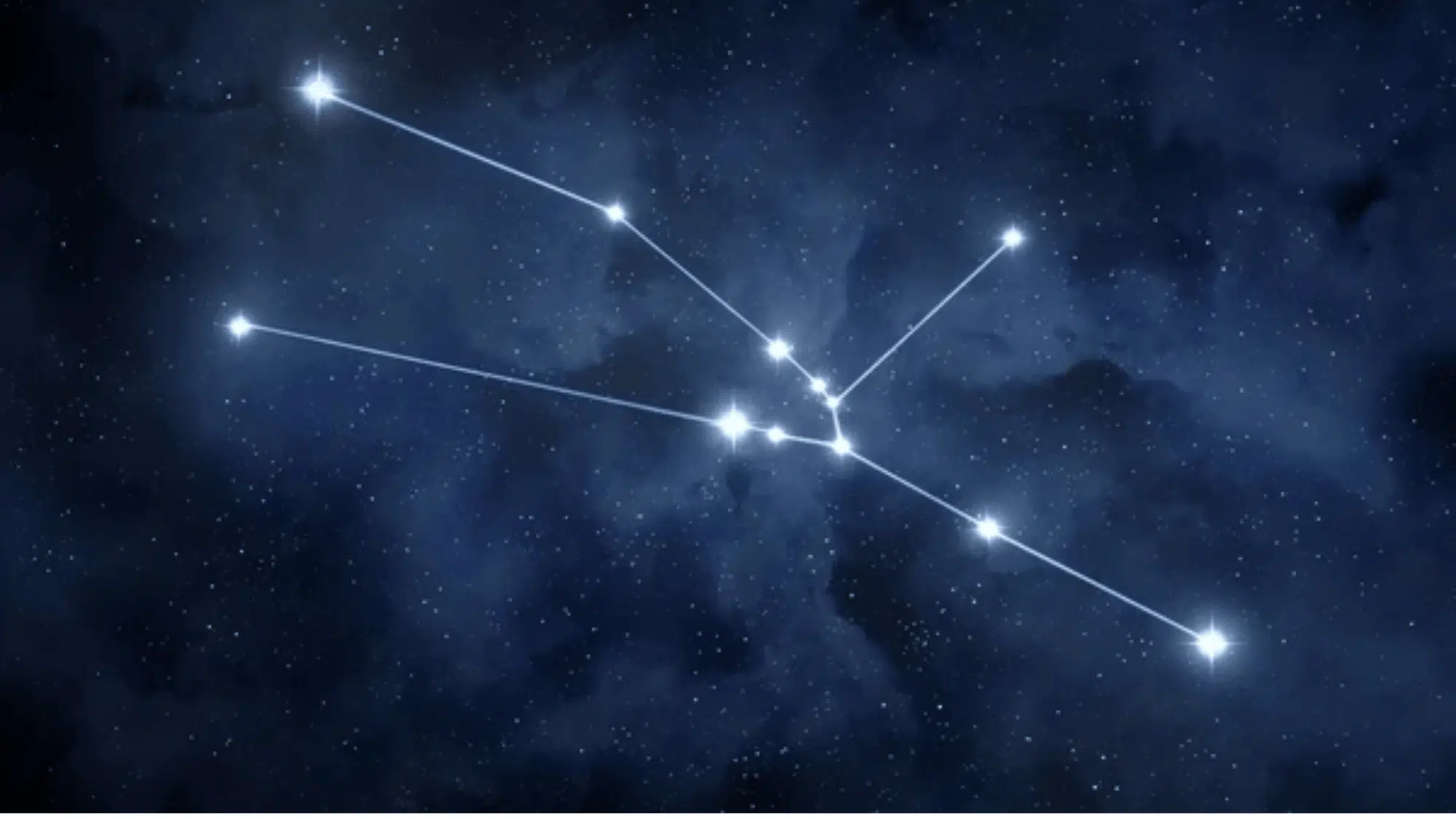Stargazing has always held a certain magic, drawing us to look up and wonder about the patterns scattered across the night sky.
For centuries, constellations have guided travelers, inspired myths, and connected people with the universe above.
If someone ever tilted your head back and wished you could name more than just the “Big Dipper,” you’re not alone. The good news is that you don’t need a telescope or advanced knowledge to get started.
This guide is designed for beginners who want to spot easy star constellations with confidence.
With a few simple tips, a person will soon recognize familiar shapes and enjoy the timeless joy of connecting the dots overhead.
What are Constellations?
Constellations are groups of stars that form recognizable patterns in the night sky, often resembling animals, objects, or characters from legends.
Ancient civilizations, from the Greeks and Romans to the Egyptians and Chinese, used these star patterns to tell stories, track seasons, and even voyage across land and sea.
Many of the names we use today originate from Greek mythology, such as Orion the Hunter and Cassiopeia the Queen.
Some constellations are easier to spot because they include bright stars arranged in simple shapes, such as a “W” or a belt.
These notable features make them the perfect starting point for anyone new to stargazing.
Types of Constellations
Constellations are grouped into different types based on how and where they appear in the night sky. Knowing these categories helps beginners understand when and where to spot them.
| Type of Constellation | Definition | Examples | Best Visibility |
|---|---|---|---|
| Circumpolar | Never set below the horizon; visible all year from certain latitudes. | Ursa Major, Ursa Minor, Cassiopeia | Year-round (near poles) |
| Seasonal | Visible only in certain months, depending on Earth’s orbit. | Orion, Leo, Scorpius, Pegasus | Winter, Spring, Summer, Autumn |
| Zodiac | It lies along the Sun’s yearly path (ecliptic); it is used in astrology and astronomy. | Taurus, Gemini, Virgo, Sagittarius | Throughout the year (varies) |
| Equatorial | Found along the celestial equator; seen from both hemispheres. | Orion, Aquarius, Pisces | Global visibility |
| Southern | Best or only seen from the Southern Hemisphere. | Crux, Centaurus, Carina | Southern Hemisphere skies |
How to Find the Perfect Stargazing Conditions
For the best stargazing, head away from city lights, choose a clear night with little moonlight, and let your eyes adjust to the darkness for sharper views.
- Escape light pollution: City lights can wash out even the easiest star constellations. Head to parks, open fields, or countryside locations.
- Look for clear skies: Clouds block visibility, so choose nights with minimal cloud cover.
- Watch the moon phase: A full moon’s brightness makes faint stars harder to see; darker nights are best.
- Know the seasons: Some constellations are seasonal. Orion is easiest to spot in winter, while Cygnus shines in summer.
- Pick the right moment: The right time and place make stargazing more enjoyable and rewarding.
The Simple Constellations for New Stargazers
For a person new to stargazing, starting with simple constellations makes the night sky less overwhelming and more enjoyable. These easy patterns are perfect for beginners to spot.
The Big Dipper (part of Ursa Major)
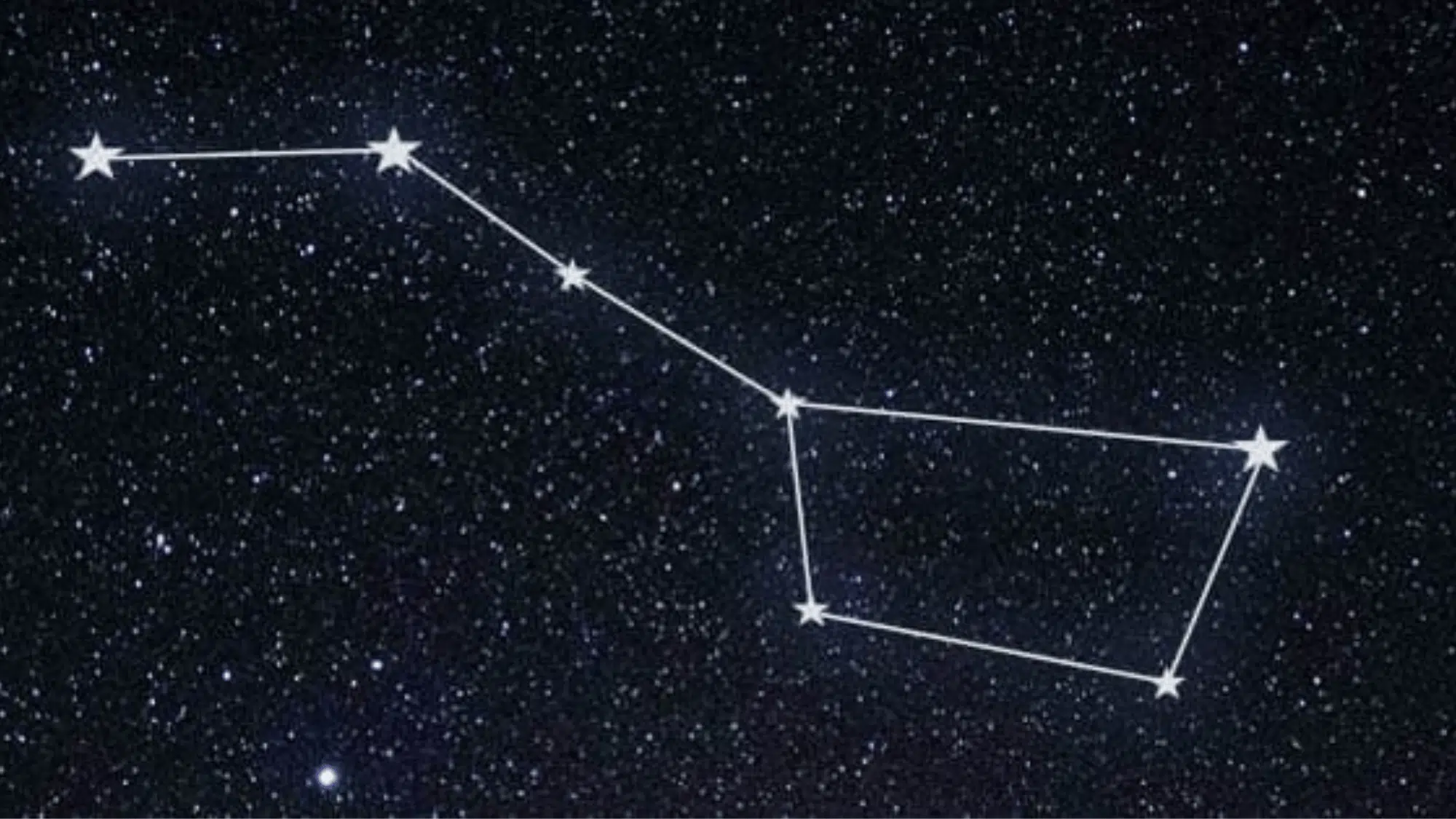

Image Source: StarName Registry
The Big Dipper is a star pattern shaped like a ladle or spoon, forming part of the larger constellation Ursa Major.
It’s one of the first constellations beginners notice because of its bright, distinct shape.
The two stars at the edge of its “bowl” point directly to Polaris, the North Star, making it an excellent guide for navigation. Easy to spot, it’s visible year-round in the Northern Hemisphere.
Orion the Hunter
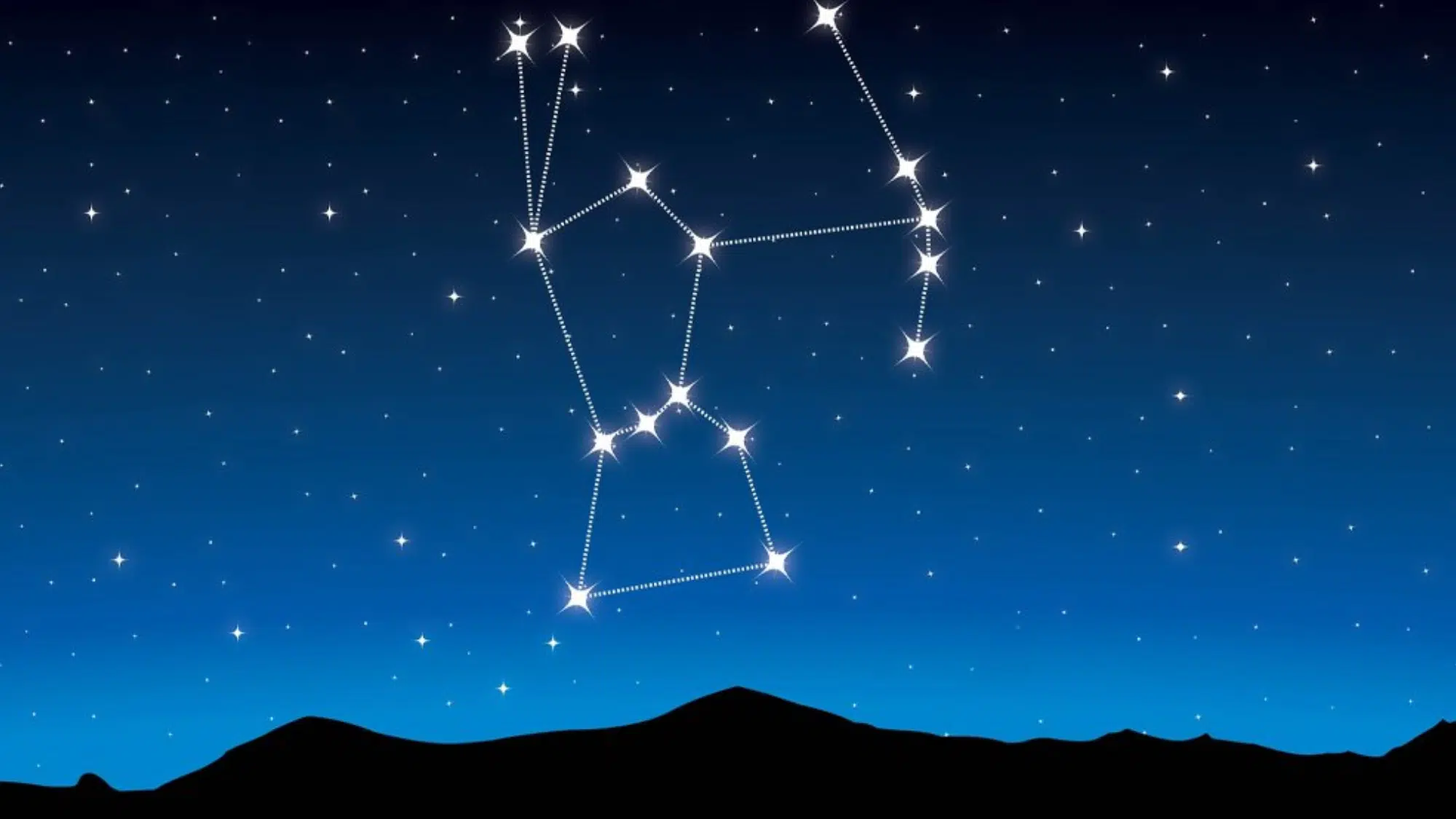

Image Source: Planet Guide
Orion is one of the most iconic constellations, best seen during winter nights. Its three-star belt stands out clearly, forming a straight line across the sky.
Four bright stars mark his shoulders and knees, creating a bold rectangular outline.
Orion is also home to Betelgeuse, a red supergiant, and Rigel, a blue supergiant, making it dazzling to the naked eye. Its vivid, simple shape makes Orion ideal for new stargazers.
Cassiopeia
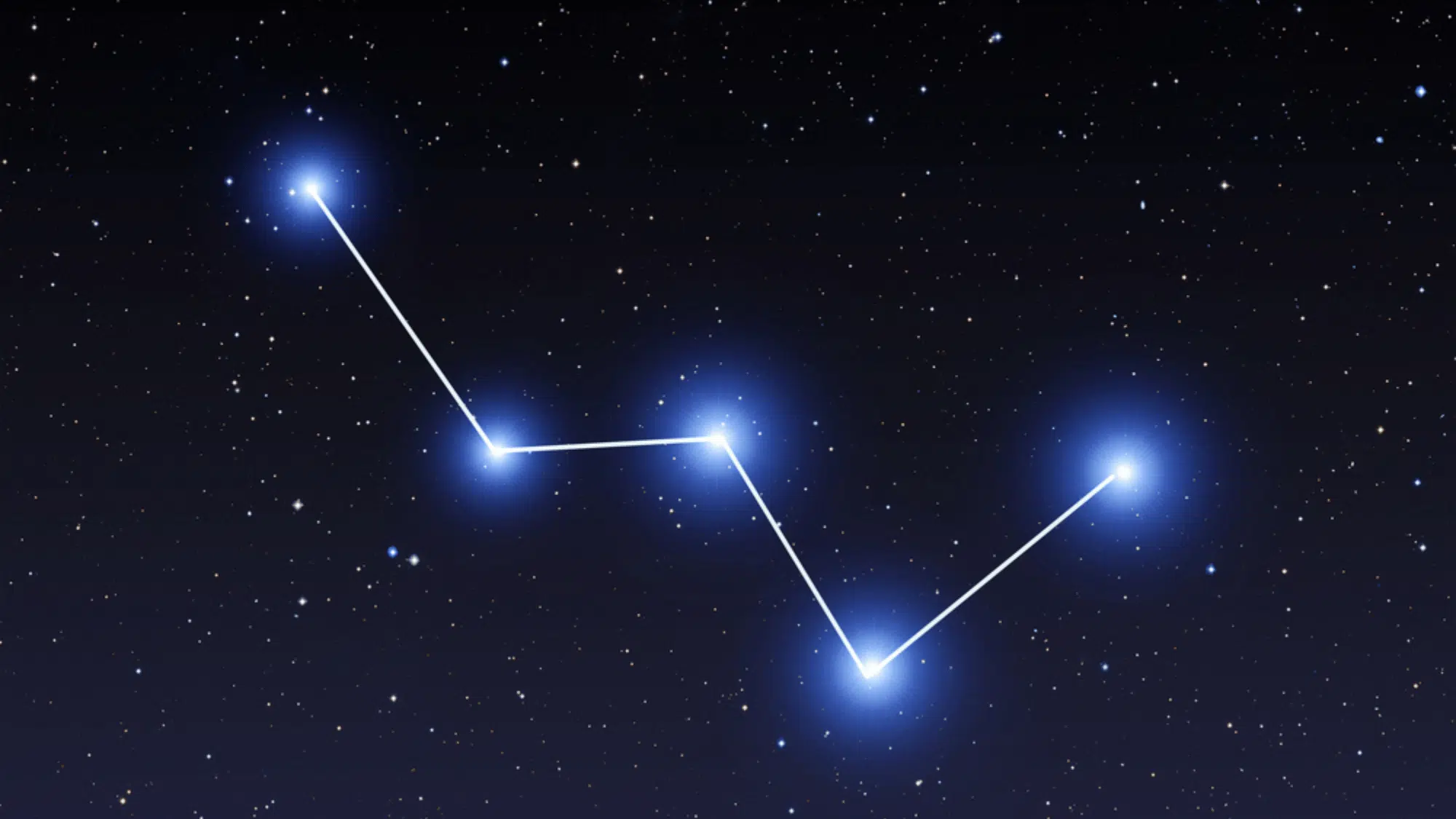

Image Source: Planet Guide
Cassiopeia is instantly recognizable by its five bright stars arranged in a “W” or “M” shape.
This constellation represents a mythical queen and sits close to the North Star, making it a reliable landmark in the northern sky.
Cassiopeia is circumpolar, meaning it never fully sets and can be seen all year in the Northern Hemisphere. Its distinctive shape and consistent visibility make it one of the easiest constellations to find.
Cygnus the Swan (Northern Cross)
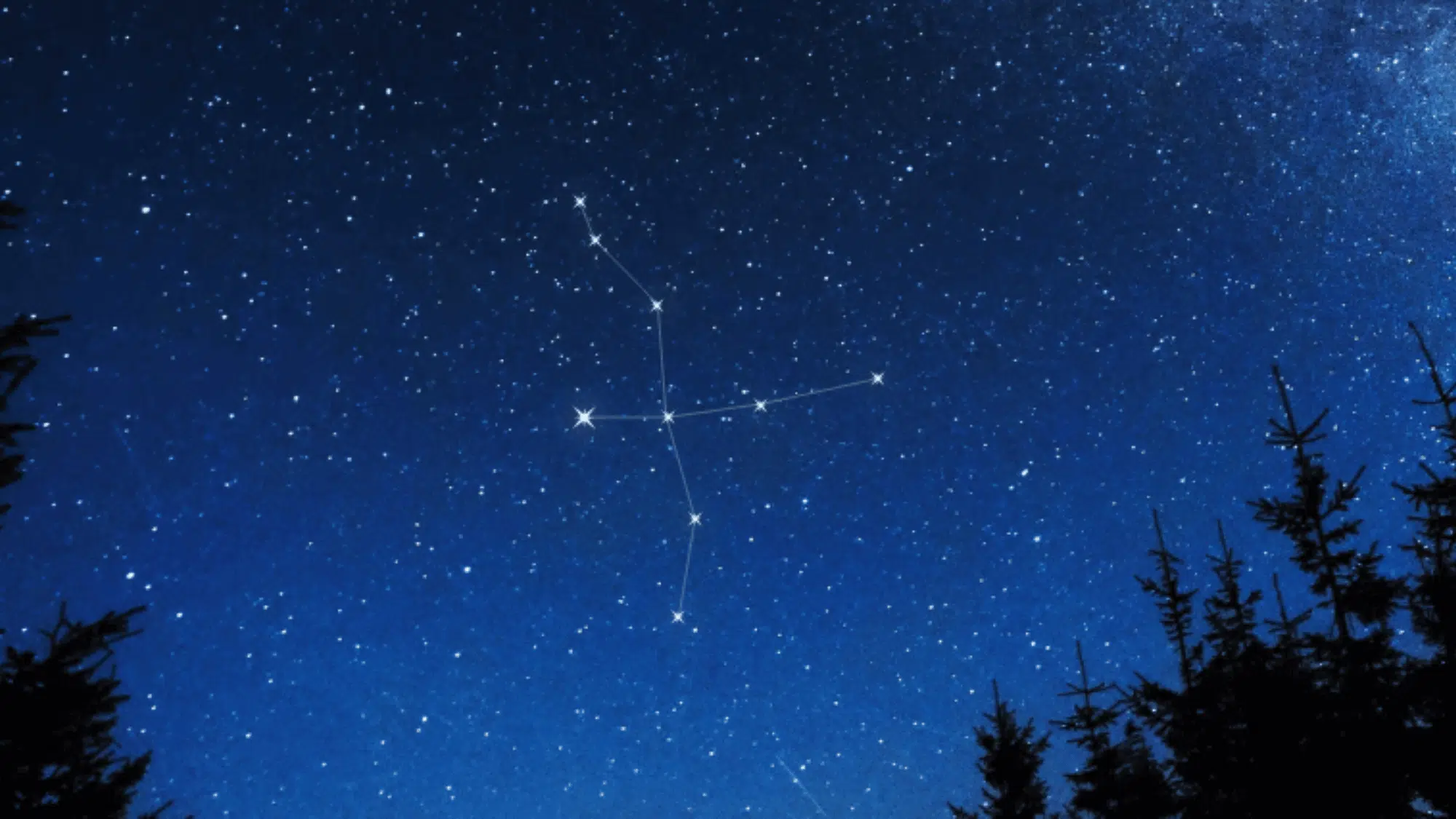

Image Source: StarRegistration
Cygnus, also known as the Northern Cross, spreads across the Milky Way like a graceful swan in flight. Its brightest star, Deneb, forms the swan’s tail and is also part of the famous Summer Triangle.
The cross-like shape of Cygnus makes it easily recognizable, especially during the summer.
Besides its striking appearance, the constellation hosts fascinating deep-sky objects, offering beginners both beauty and discovery as they learn the night sky.
Leo the Lion
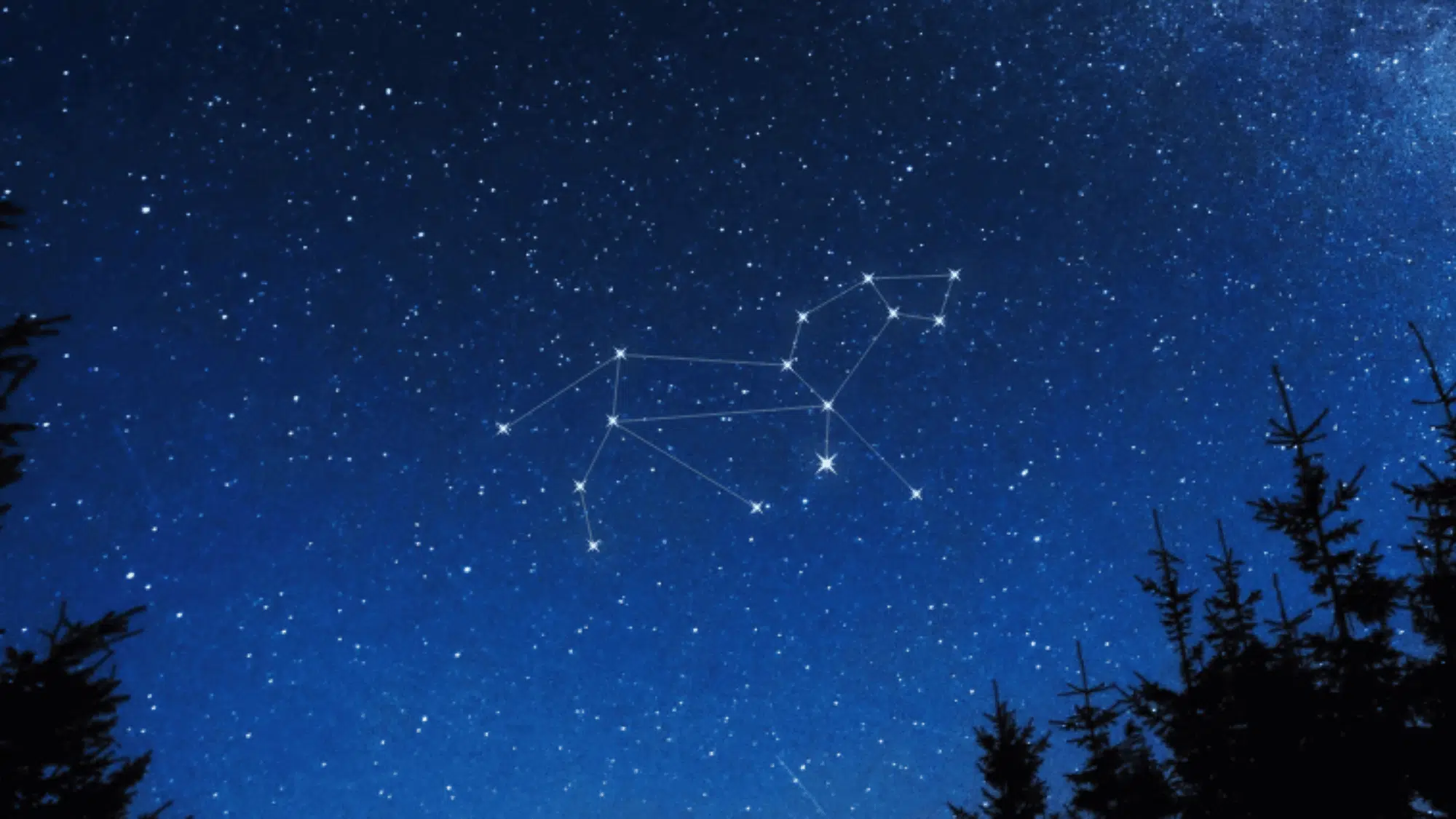

Image Source: StarRegistration
Leo is a bold spring constellation that resembles the outline of a lion. Its brightest stars form a backward question mark, called “the Sickle,” symbolizing the lion’s mane.
A triangle of stars behind it shapes the body and tail. Leo also includes Regulus, a brilliant blue-white star that anchors the constellation.
Its clear, simple structure makes it one of the most rewarding constellations for beginners to identify on spring nights.
Avoid Common Errors While Stargazing
When starting out, it’s easy to make small mistakes that limit your view of the night sky. Knowing what to avoid helps make stargazing smoother and more fun.
- Not letting eyes adjust: Jumping into stargazing too quickly reduces visibility. Give your eyes 20–30 minutes in the dark to fully adapt.
- Ignoring the moon phase: A bright full moon washes out faint stars, making constellations harder to see. Choose nights closer to a new moon.
- Confusing planets with stars: Bright planets like Venus or Jupiter don’t twinkle, which makes them easy to mistake for stars.
- Forgetting seasonal shifts: Constellations shift with the seasons, so some appear only at certain times. Orientation can be tricky. Use a compass or Polaris, the North Star, to guide you.
- Using too much tech: Relying only on apps can distract from the experience. Try balancing screen use with natural observation to learn the sky better.
- Expecting instant success: Spotting constellations takes practice. Don’t get discouraged if you miss them the first time. Return on another clear night for a better chance.
Conclusion
Stargazing is a classic way to connect with the night sky, and it doesn’t have to be complicated.
By starting with easy star constellations, beginners can quickly gain confidence and recognize familiar patterns in the sky.
Whether it’s the Big Dipper pointing to Polaris or Orion’s Belt standing boldly in the winter sky, these constellations make the experience accessible and enjoyable.
The key is to take it slow, let the eyes adjust, and savor the process.
So why not step outside tonight, look up, and spot just one constellation? It might be the first step in a lifelong journey of wonder under the stars.



